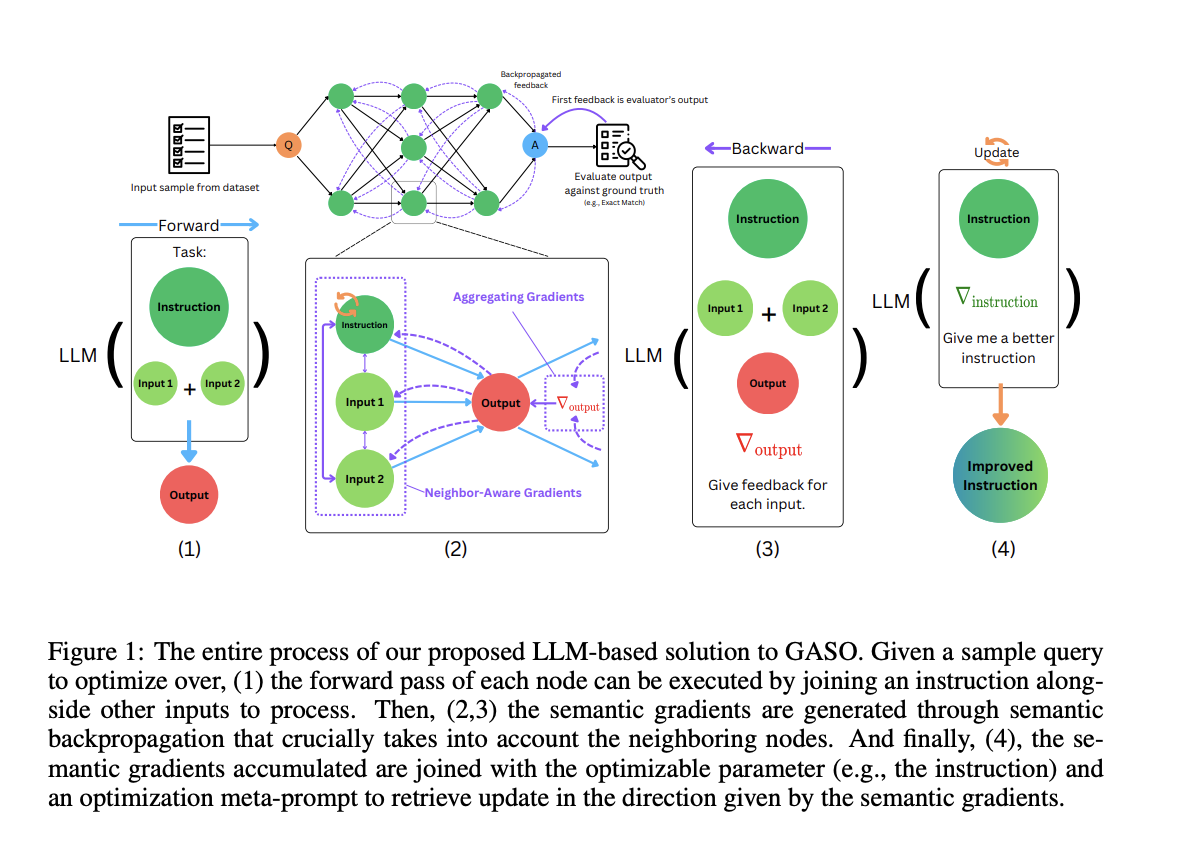
Revolutionizing AI with Language-Based Agentic Systems
What Are Language-Based Agentic Systems?
Language-based agentic systems are advanced AI tools that automate tasks like answering questions, programming, and solving complex problems. They use Large Language Models (LLMs) to communicate naturally, simplifying how different components work together. This innovation makes it easier to perform complex tasks, but optimizing these systems for real-world use is still a challenge.
The Challenge of Optimization
One major issue in optimizing these systems is providing clear feedback to their different parts. Since these systems are built using computational graphs, the connections between components can complicate this process. Without precise guidance, it’s hard to improve individual parts, which can hinder overall system performance and limit scalability in complex applications.
Existing Solutions and Their Limitations
Some existing solutions, like DSPy, TextGrad, and OptoPrime, attempt to tackle this optimization problem. DSPy focuses on prompt optimization, while TextGrad and OptoPrime use feedback methods inspired by traditional techniques. However, these solutions often miss important relationships between components, leading to less effective optimization.
Introducing Semantic Backpropagation
Researchers from King Abdullah University of Science and Technology (KAUST) and others developed semantic backpropagation and semantic gradient descent to address these challenges. This innovative approach improves optimization by introducing semantic gradients that clarify how different variables affect performance. It focuses on aligning component relationships for better results.
The Benefits of Semantic Backpropagation
Semantic backpropagation uses computational graphs to guide the optimization process. It captures relationships between nodes, allowing for more accurate adjustments. This method outperforms traditional techniques, as demonstrated by experiments on various datasets:
- On GSM8K, it achieved 93.2% accuracy, significantly higher than TextGrad’s 78.2%.
- In the BIG-Bench Hard dataset, it reached 82.5% accuracy in natural language tasks and 85.6% in algorithmic tasks, surpassing other methods.
Enhanced Efficiency and Cost-Effectiveness
Semantic gradient descent not only boosts performance but also reduces computational costs. By incorporating nearby node information, it improved classification accuracy to 71.2% in the LIAR dataset, showcasing its potential for scalable and affordable optimization.
Conclusion
The research from KAUST, SDAIA, and IDSIA introduces a groundbreaking solution to the optimization challenges in language-based agentic systems. By utilizing semantic backpropagation and gradient descent, this approach overcomes the limitations of previous methods and sets a foundation for future advancements in AI.
Get Involved!
Check out the Paper and GitHub Page. Follow us on Twitter, join our Telegram Channel, and connect with our LinkedIn Group. Don’t forget to join our 60k+ ML SubReddit!
Join Our Webinar
Gain actionable insights into enhancing LLM model performance while ensuring data privacy.
Explore AI for Your Business
- Identify Automation Opportunities: Find areas in customer interactions that can benefit from AI.
- Define KPIs: Ensure measurable impacts from your AI initiatives.
- Select an AI Solution: Choose customizable tools that meet your needs.
- Implement Gradually: Start small, gather insights, and expand AI use wisely.
For AI KPI management advice, contact us at hello@itinai.com. Stay updated with our insights on Telegram or follow us on @itinaicom.
Discover how AI can transform your sales processes and customer engagement at itinai.com.


























